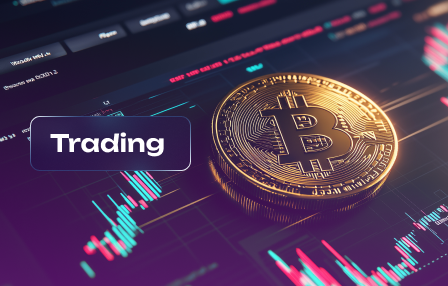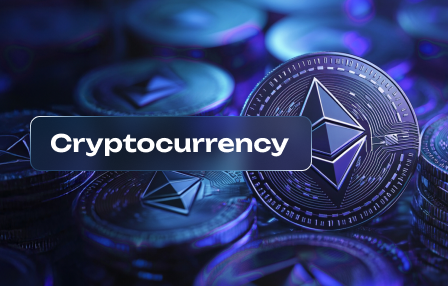The Future of OTC Trading in the Metaverse and Web3
February 20, 2025
Adopt a proactive approach by leveraging emerging technologies that reshape the landscape of asset exchange. The rise of decentralized finance (DeFi) platforms is crafting a new paradigm for secure and transparent transactions, offering opportunities beyond traditional financial systems.
The shift towards a decentralized economy presents unique advantages in asset management and peer-to-peer exchanges. Emphasizing transparency, these systems minimize the risks associated with centralized control, allowing participants to engage directly without intermediaries.
By embracing these advancements, individuals and businesses can tap into innovative frameworks that facilitate seamless transfers and real-time settlements. Engaging with decentralized applications will enhance your operational efficiency and broaden access to diverse markets.
Focus on collaboration within communities to foster growth in this digital ecosystem. Building partnerships with like-minded innovators will accelerate the development of new tools and protocols that enrich user experiences, ensuring that everyone has a stake in the evolving economy.
As we step further into this new era, staying informed about technological developments will be key. Embrace change, adapt quickly, and seize the opportunities presented by this transformative wave.
Decentralized OTC Platforms Overview
The evolution of peer-to-peer marketplaces has transformed how assets are exchanged. Decentralized platforms facilitate seamless transactions, enhancing user autonomy and privacy. Smart contracts eliminate intermediaries, reducing transaction costs and improving efficiency.
Key players in this sector prioritize security through blockchain technology, ensuring that user data and funds remain protected. Solutions like multi-signature wallets enhance trust, allowing participants to engage in trades with confidence.
Liquidity is a major concern; thus, many platforms implement liquidity pools. These pools provide traders with immediate access to assets, minimizing slippage during transactions. Strategies like automated market making are gaining traction, allowing for continuous price discovery.
User experience is paramount. Intuitive interfaces and robust customer support systems drive adoption. Educational resources empower users to navigate complexities, fostering a knowledgeable community.
In a decentralized economy, governance models play a critical role. Community-driven decision-making ensures that platforms evolve according to user needs, promoting a sense of ownership among participants.
Looking ahead, innovations such as cross-chain compatibility will likely enhance interoperability among different ecosystems. This capability can revolutionize asset accessibility, connecting diverse markets seamlessly.
Consider engaging with these platforms as they continue to redefine how value is exchanged in a digital landscape. Emphasizing transparency and decentralization will be key to maintaining user trust and participation.
Smart Contracts in OTC Transactions
Integrate smart contracts for seamless and secure agreements in peer-to-peer exchanges. These self-executing contracts ensure that terms are met automatically, minimizing the need for intermediaries. Utilizing blockchain technology enhances trustworthiness and transparency, critical components in decentralized economies.
Leverage programmable logic to automate payment processes upon meeting predefined conditions. This minimizes counterparty risk and promotes liquidity in private transactions. For example, a buyer can transfer assets only after receiving verifiable confirmation of delivery, reducing disputes.
Implement robust auditing features within smart contracts to maintain compliance with regulatory frameworks. This not only increases accountability but also attracts institutional investors who prioritize security and regulation adherence in their dealings.
Utilizing oracles can expand the functionality of smart contracts by providing external data feeds necessary for executing conditions based on real-world events. This capability broadens the scope of applications, allowing asset valuations to reflect current market conditions accurately.
Emphasize user experience by creating intuitive interfaces for interacting with smart contracts. Simplified processes encourage participation from less tech-savvy users while ensuring accessibility across diverse demographics.
Consider scalability solutions to handle increasing transaction volumes as adoption grows. Layer-2 protocols can enhance speed and reduce costs, ensuring that your platform remains competitive as demand surges.
Invest in educational resources to guide users through the intricacies of smart contract functionalities. Knowledgeable participants will drive higher engagement levels and foster a more robust ecosystem.
Liquidity Solutions for Virtual Assets
Utilizing automated market makers (AMMs) can significantly enhance liquidity for digital assets. These decentralized protocols allow users to trade directly from their wallets, minimizing counterparty risk and enabling seamless transactions.
- Yield Farming: Engage in yield farming strategies to provide liquidity in exchange for rewards. This incentivizes participation and increases asset availability.
- Liquidity Pools: Establish liquidity pools on decentralized platforms, allowing users to contribute assets in exchange for transaction fees and governance tokens.
- Cross-Chain Solutions: Implement cross-chain bridges to facilitate asset movement across different blockchain networks, enhancing trading opportunities and liquidity depth.
- Order Book Models: Explore hybrid models that combine traditional order books with decentralized mechanisms to offer real-time price discovery and improved capital efficiency.
Integrating advanced algorithms can optimize the matching of buy and sell orders, reducing slippage and enhancing overall transaction volume. Employing smart routing technology ensures that trades are executed at the best possible prices across multiple platforms.
- Dynamic Pricing Mechanisms: Utilize dynamic pricing to adjust asset values based on supply and demand fluctuations, ensuring competitive rates.
- Tokenized Assets: Develop tokenized representations of real-world assets to enhance liquidity within the ecosystem, attracting a broader range of investors.
- Decentralized Finance (DeFi) Integrations: Leverage DeFi protocols to enable lending and borrowing of virtual assets, creating additional avenues for liquidity generation.
The synergy between these solutions fosters an environment where virtual asset trading becomes more accessible and efficient. Continuous development in this area is key to supporting a robust economy centered around decentralized finance. In this innovative space, adaptability is paramount; stay ahead by embracing new technologies that facilitate greater participation and liquidity enhancement.
Regulatory Challenges Ahead
To ensure compliance in the evolving landscape, proactive measures are necessary. Decentralization introduces a myriad of obstacles, primarily due to varying jurisdictional regulations. Engaging with local authorities early can mitigate risks associated with non-compliance.
Transparency is paramount. Platforms should implement robust reporting mechanisms to provide regulators with insights into transaction volumes and user activities. This transparency builds trust and paves the way for constructive dialogues with governing bodies.
Another significant issue is anti-money laundering (AML) requirements. Establishing clear guidelines for user verification is critical. Utilizing decentralized identity solutions can streamline this process while ensuring user privacy remains intact.
The classification of virtual assets poses further complications. It’s essential to stay updated on how different assets are categorized across jurisdictions. Engaging legal experts familiar with local laws helps anticipate changes and adapt strategies accordingly.
Consumer protection cannot be overlooked. Implementing user-friendly interfaces that educate participants about risks associated with virtual transactions enhances safety and encourages responsible behavior within the economy.
Lastly, collaboration among industry players can foster a unified approach towards regulation. Forming coalitions allows for collective bargaining and sharing best practices, leading to a more standardized framework that benefits all stakeholders involved.



